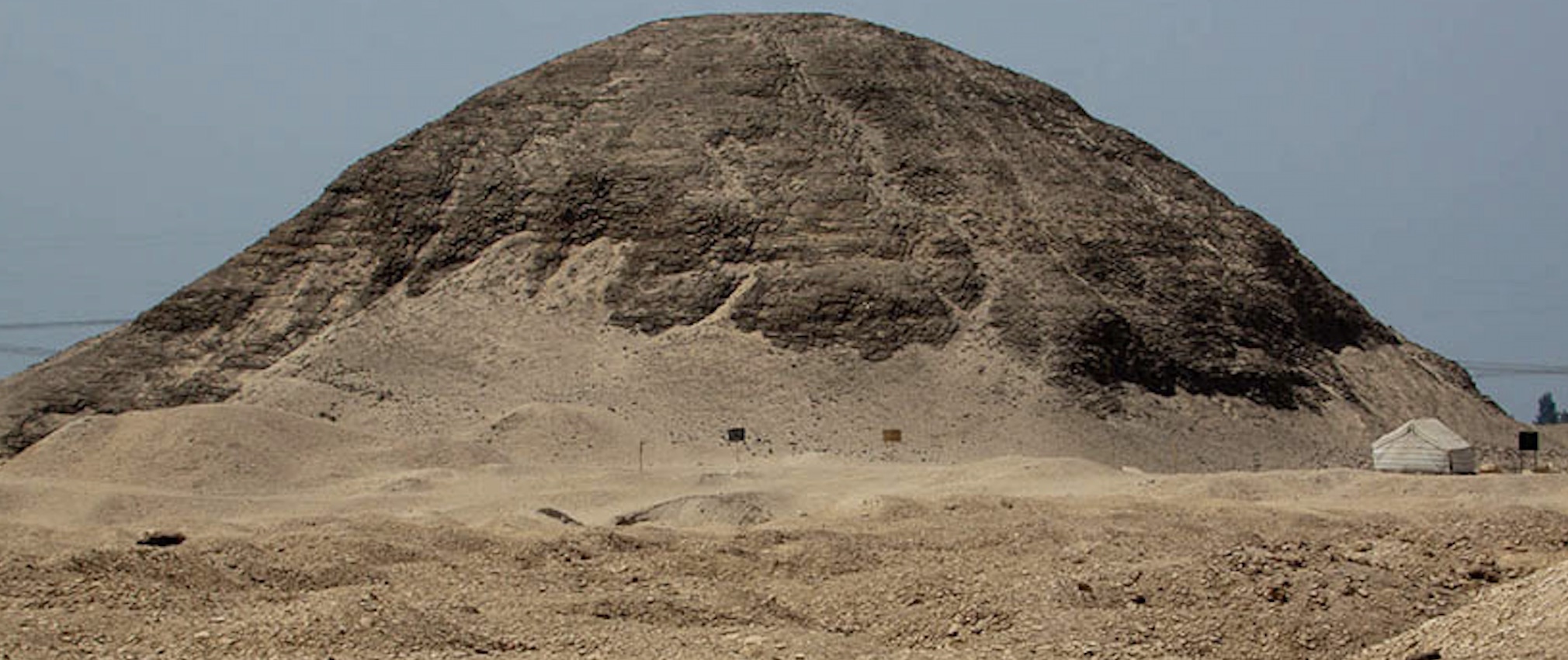Near the Al-Fayyoum entrance are ancient findings that have been found and that are yet to be unearthed; like the rest of Egypt it is an area where tales from history have been written and dug into its sands, most notably, the Hawara Pyramid. Hawaret al Maqwa, or Hawara, is an archaeological site from ancient Egypt, south of the site of Crocodilopolis at the entrance to the depression of the Fayyoum oasis. Notwithstanding the test of time, what was once coated with limestone, the pyramid now resembles a huge pile of sand.
The Hawara Pyramid was built by King Amenmehat III, who ruled Egypt in the 12th Dynasty and brought great economic prosperity during his reign.
The pyramid’s core was built entirely out of mud-brick stones with an outer limestone coating. The limestone encasing has been pillaged by stone-robbers centuries ago, and only the mud-brick core remains today, giving it its modern-day appearance.
Amenmehat III made the entrance to his pyramid in the Southern section of the structure, which was different from the other previous pyramids constructed during the Old Kingdom, where entrances were built in the Northern section. Amenmehat III was buried in the Hawara Pyramid, where two sarcophagi were found, one for the king and one for his daughter until her own tomb was built.
Amenemhat III constructed a large cult complex believed to have been built in the second half of his reign, called the ‘Ankh-Amenhat,’ where he was worshiped as a god.
During the Classical Antiquity period, which is the cultural period between 8th century BC and 6th century AD), the complex he built became known as ‘Labyrinth,’ as famed by the ancient Greek historian Herodotus. Herodotus visited the temple in the 5th century BC, and described it as a building complex with 3,000 rooms connected by winding passages.

In this book called, ‘The Oxford History of Ancient Egypt,’ author Ian Shaw explains that the Hawara Temple became widely known as the ‘Labyrinth’ due to its maze of rooms and corridors. “
“This I have actually seen, a work beyond words. For if anyone put together the buildings of the Greeks and displayed their labors, they would seem less in both effort and expense to this labyrinth… Even the pyramids are beyond words, and each was equal to many and mighty works of the Greeks. Yet the labyrinth surpasses even the pyramids,” explained Herodotus in Histories, Book, II.
This temple was destroyed 2,000 years ago, leaving only the fragments visible in the foreground.
Amenmehat III’s Hawara Pyramid was not his first construction; he built his first pyramid, dubbed the Black Pyramid, at Dahshur. It was originally named Amenemhet is Mighty; however, it earned the name the Black Pyramid for its dark, decaying appearance as a rubble mound. There were construction issues and the structure was abandoned.
A historical site for not only the famous pyramid and its mortuary temple, the Hawara village was also where British archaeologist Flinder Petrie discovered the famous Fayyoum Mummy Portraits that were attached to the mummies of ancient Egypt.
The Hawara Pyramid did not stand the test of time, and now it is merely a shadow of its former grandeur.
“Only scanty remains are left of this which was part of the pyramid complex of Amenemhat III, despite drastic interventions,” as stated in the journal article.







Comments (3)
[…] حكايات من الماضي: هرم حوارة ومتاهة مصر المفقودة منذ زمن… […]
[…] https://egyptianstreets.com/2022/05/05/tales-from-the-past-the-hawara-pyramid-and-egypts-lost-labyri… […]